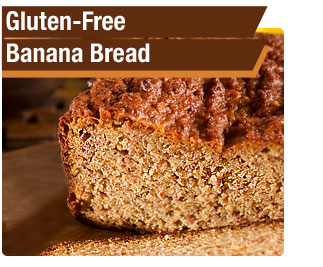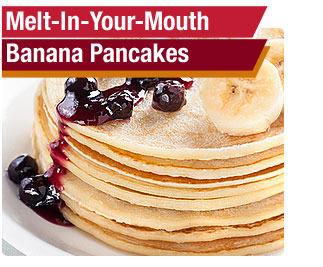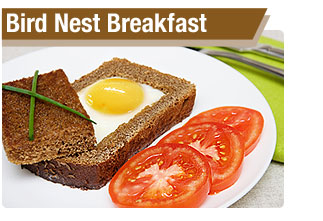A MESSAGE FROM PEGGY
Margie is our packaging manager and Quency is our sprout room manager in charge of the daily sprouting and drying process.
We’re trying to better meet our customers’ needs this year by providing more recipes, especially gluten–free, more baking tips for sprouted flours, and educational information that answers your questions about sprouted flours, the latest research, and your concerns. Look for changes on our web site soon. Have you checked out our video tour?
New products available February 1st include organic sprouted sorghum (milo) and sprouted sorghum flour, and organic sprouted hulless barley for all your favorite soups and salads. The new barley is sure to be a best seller since barley is used in so many of our favorite recipes and until now we’ve only been able to offer the whole barley, which is not suitable for cooking.
GLUTEN–FREE is finally here. Our non–gluten flours can now be advertised as gluten–free (less than 20ppm gluten) as our new facility is now open! All of our non–gluten sprouted flours are now milled and packaged on dedicated equipment in their own facility with testing performed on individual batches for ensured integrity and your safety.
Two of our valued employees and friends are pictured this month to introduce you to part of our dedicated staff. Margie is our packaging manager and Quency is our sprout room manager in charge of the daily sprouting and drying process. Quency has been part of To Your Health's family for almost two years. Margie manages all of our retail packaging for internet sales and wholesale accounts. While Margie is fairly new to our family, we wouldn’t want to operate without her.
Jeff and I are enjoying some new breakfast recipes I managed to find time to convert using sprouted flours. I’ve included a gluten–free bread recipe using our sprouted sorghum flour, a new pancake recipe your family is sure to enjoy, and a quick and easy breakfast idea when you're on the go. Enjoy!
Back to top


Gluten–Free Banana Bread
- 1 cup boiling water
- ½ cup chopped dates
- 4 large eggs
- 2 cups mashed, over-ripe bananas (about 4)
- ¾ cup maple sugar (or sweetener of choice)
- ½ cup unsweetened applesauce
- 1 teaspoon vanilla
- 1 ½ cups organic sprouted brown rice flour
- ½ cup organic sprouted sorghum flour
- 1 teaspoon baking soda
- ½ teaspoon sea salt
- ¼ teaspoon ground nutmeg
- 1/3 cup melted butter
- ½ cup chopped walnuts or pecans
- Preheat oven to 350 degrees. Pour boiling water over dates in a small bowl. Let stand 10 minutes. Drain and pat dry.
- Lightly beat eggs in a large bowl. Whisk in bananas and next 3 ingredients until blended.
- Stir together sprouted brown rice flour and next 4 ingredients in a small bowl. Gently stir flour mixture into egg mixture, stirring just until blended. Gently stir in melted butter, walnuts, and dates. Spoon mixture into a well-greased 9x5" loaf pan.
- Bake at 350 degrees for 60-70 minutes or until a toothpick inserted in center comes out clean. Cool in pan on wire rack 10 minutes. Remove from pan to wire rack and cool completely before slicing.

Back to top


Melt–In–Your–Mouth
Banana Pancakes
- 1 ½ cups organic sprouted rolled oats
- 1 ½ cups whole fat milk
- 1 cup TYH organic sprouted flour of choice
- 2 tablespoons maple sugar or sucanat
- 2 large eggs, lightly beaten
- 5 tablespoons coconut oil, melted
- 2 very ripe bananas
Mix rolled oats and milk. Stir in dry ingredients. Stir in eggs and coconut oil. Mash bananas with a fork and add to pancake batter. Cover batter and let sit on counter for 1 hour so oats will soften. Stir well just before cooking.
Heat skillet on medium low heat. Lightly brush with coconut oil or melted butter. Pour ¼ cup batter per pancake into skillet. Cook until browned on both sides. NOTE: These pancakes should cook slowly so interior has an opportunity to cook and fluff before outside gets overly browned.
Serve with warm maple syrup. Jeff and I enjoy
bacon and coffee with lots of heavy raw cream with our pancakes.

Back to top


- People Before Profit: The Inspiring Story of the Founder of Bob's Red Mill
 , by Ken Koopman , by Ken Koopman
- Flour Water Salt Yeast: The Fundamentals of Artisan Bread and Pizza
 , by Ken Forkish , by Ken Forkish
- Turn Here Sweet Corn: Organic Farming Works
 , by Atina Diffley , by Atina Diffley
-
Is There Arsenic In My Rice?
I have received a few inquiries about arsenic in our sprouted brown rice so I called our rice supplier (Lone Pine Enterprises) and here’s what they had to say. I’ve also added a link to research conducted on arsenic. It will give you lots more information than you ever wanted to know on the topic.
Since arsenic is a natural component of the earth’s crust, low levels of the element are found in all environmental media. Natural levels of arsenic in soil usually range from 1-40 mg/kg, with a mean of 5 mg/kg, although much higher levels may occur in mining areas, at waste sites, near high geological deposits of arsenic-rich minerals, or from pesticide application.
The issue of arsenic in rice is not a new issue. Arsenic stays in the soil and trace amounts found depend on the field/soil the rice was grown in. This applies to all rice, not just organically grown rice, grown throughout the world.
Check out: http://www.atsdr.cdc.gov/toxprofiles/tp2-c6.pdf
Back to top


I found this next article to be informative as it listed different kinds of flours, their properties and uses. Although the author doesn't talk about sprouted flours, which are healthier than processed and un-sprouted flours, the information is educational. Hope you enjoy it.
(by Roberta L. Duyff, published in Food & Nutrition Magazine, Fall 2012 – excerpts only)
| Cake or pastry flour |
Fine-textured refined flour made from soft wheat. High in starch. Used for tender cakes and pastries. |
| Bread flour |
Refined flour made from hard wheat and a small amount of barley flour. Very high gluten content. Used for bread making. |
| Semolina flour |
Generally coarsely-milled, refined hard durum wheat flour. Used for pasta, couscous, gnocchi and puddings. High in gluten. Coarsely-milled other wheat varietals or grains also may be called semolina, such as corn semolina (grits) and rice semolina. |
| All–purpose flour |
Refined blend of high-gluten hard wheat and low-gluten soft wheat. Milled with only the endosperm – not bran or germ. Used for baking, thickening and breading. Usually sold pre-sifted. Some fortified with calcium and vitamins A or D. |
| Graham flour |
Coarser flour made by finely grinding the grain's endosperm, then mixing bran and some or all of the wheat germ back in. Sweet, nutty flavor. Gives bread a coarse, dense texture.
|
| 100% whole–wheat flour |
Made from hulled red wheat grain (berries). Provides more fiber and other nutrients. Used in place of all-purpose flour. Makes a heavier bread; in baked goods, often mixed with all-purpose flour for a lighter texture and better rising. Has a shorter shelf-life than all-purpose flour. |
| Gluten flour |
Refined flour made from hard wheat with most starch removed. Significantly higher protein (gluten) content than all-purpose flour. Increases strength and rising power of dough. Blend with lower-gluten flours for bread. |
| White whole–wheat flour |
Made from hulled white spring wheat. Use instead of regular whole-wheat flour in baked goods for a milder taste and a light color. |
| Self–rising flour |
All-purpose flour with added salt and baking soda. Convenience product not generally used for yeast breads. Leavening action of baking soda can diminish if stored too long. |
| Almond meal/flour |
Made from blanched almonds. Low in carbohydrates, high in protein. Adds moisture and nutty taste to pastries, baked goods and dessert filling. Not meant to replace flour in yeast or quick breads. Short shelf life. |
| Peanut flour |
Made from crushed, fully or partly defatted peanuts. Use to thicken or add flavor to soups and sauces. Adds nutty flavor to baked goods or main dishes. |
| Amaranth flour |
Ground from an ancient seed. Has a high level of complete protein, including lysine. Use in baked goods for up to 25% of flour content. Excellent thickener for sauces, gravies, and soups. Has a slightly sweet, nutty flavor. |
| Soy flour |
Made from milled soybeans. High in protein, lower in carbohydrate than all-purpose flour. Good source of calcium and excellent source of iron and magnesium. Use to thicken sauces. As a wheat flour substitute in quick breads and cookies, use 1 part soy flour to 3 parts all-purpose flour. Reduces fat absorption in frying batter or dough. |
| Rye flour |
Heavy, dark flour made from rye. Contains less gluten than all-purpose or whole-wheat flour. Produces heavy, dense bread. For better rising, blend with a higher-protein flour. Mostly sold as medium rye flour; light and dark rye flours available. |
| Corn flour |
Milled from the whole corn kernel (cornstarch is made from the endosperm). Use in breading or blend with other flour for batters or dough. |
| Rice flour, brown |
Made from unpolished brown rice. Nutty flavor. Used like white flour, but gives a grittier texture in baked goods such as cornbread and pound cake. |
| Rice flour, white |
Made from white rice. Used mostly in baked goods such as pie crusts and cookies. In shortbread, gives a tender mouth feel. Sweet or glutinous "sticky" rice flour is made from high-starch, short-grain rice, which is used to thicken sauces in Asian dishes. (Does not contain gluten despite its name.) |
| Oat flour |
Ground from oat groats. Used to replace some flour in a variety of recipes. Adds a rich, nutty flavor and denser texture. In baked foods that need to rise, must be combined with other flours. |
| Potato flour |
Ground from whole, dried potatoes. Use as a thickener for smooth, creamy sauces, soups, gravies and frozen desserts. For baking, adds starch to dough, which attracts and holds water; makes bread more moist and extends freshness. |
| Barley flour |
Made from pearl or whole-grain barley. Adds fiber to baked foods. Contains gluten, but not enough for adequate rising. Good as a thickener in soups, stews, sauces and gravies. |
| Sorghum flour |
Ground from ancient grain sorghum. Mild in flavor. High in antioxidants. Use in cookies, cakes, brownies, breads, pizza dough, pastas, cereals, pancakes and waffles. |
| Spelt flour |
Made from spelt (berries), an ancient grain and cousin to wheat. Has a mellow, nutty flavor. Can be substituted for wheat flour in baking. May cause reactions in wheat-allergic people. |
| Buckwheat flour |
Mmade from buckwheat, a cousin of rhubarb (not wheat varietal nor technically a grain). Combine with other flours to add a hearty, grassy flavor and color to bread. Good for pasta and pancakes. |
| Flaxseed flour |
Made by milling whole flaxseeds, making omega-3s available. In baked goods, use as a fat or egg substitute. |
| Cassava flour |
Also called manioc flour, used as a thickener in Brazilian stews. |
| Chickpea (garbanzo) flour |
Also called gram, cici and chana flour. Higher in protein. Used in cooking from India. |
| Chapati flour |
Made of wheat and malted barley flours. Used to make Indian capatis. |
| Dal flour |
Legume flour used in Indian cooking. |
| Fufu flour |
Made from dried plantain and used in Nigerian recipes. |
| Kamut flour |
Made from the ancient Egyptian grain kamut. Can be substituted for wheat if combined with other flours in making bread and pasta. |
| Millet flour |
Used in bread baking and pancakes. In India and Pakistan, called bajri flour or kurakkan. |
| Teff flour |
Made from teff grain. Has twice the iron and three times the calcium content of many other grains. Used to make injera (Ethiopian flatbread) and baked goods. |
Back to top


Bird Nest Breakfast
This recipe is an oldie but goodie. Children especially enjoy this quick and easy breakfast.
Heat a large skillet on medium heat. Lightly brush with melted coconut oil or butter.
Place sourdough bread slices on a flat surface. Use a shot glass or small biscuit cutter to cut a hole in the center of each slice. Remove the circle of bread from center. Liberally butter both sides of each slice of bread. Place in heated skillet. Carefully crack an egg into the circle of each bread slice. Add a pinch of sea salt and pepper across the yolk and cook for about 2 minutes. Flip each slice and cook an additional 2 minutes. Enjoy with your favorite breakfast accompaniments.

Back to top

|













